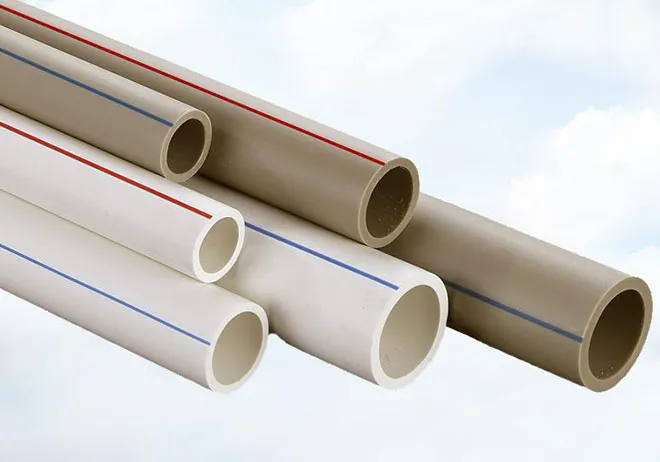Nov . 05, 2024 01:32 Back to list
type of ppr pipe products
Understanding Types of PPR Pipe Products
Polypropylene Random Copolymer (PPR) pipes are gaining widespread popularity in plumbing and other applications due to their high durability and versatility. PPR pipes are widely used in hot and cold water systems, as well as in industrial applications. This article delves into the different types of PPR pipe products, their characteristics, and their various applications.
What is PPR Pipe?
PPR pipe is made from a type of polypropylene, specifically a random copolymer, which provides it with unique properties that make it suitable for various applications. The primary advantage of PPR pipes is their excellent resistance to heat and corrosion, which makes them ideal for transporting hot water and aggressive chemicals. Furthermore, these pipes are lightweight, easy to install, and compatible with various fitting types.
Types of PPR Pipe Products
1. Standard PPR Pipes Standard PPR pipes are commonly used for water supply and distribution systems. They are available in different diameters, accommodating the needs of both residential and industrial applications. These pipes can be used in temperatures up to 95°C (203°F) and pressures reaching 20 bar (290 psi), making them reliable for hot water systems. Standard PPR pipes come in green or white colors, with green typically being used for hot water and white for cold water.
2. PPR Pipe Fittings PPR pipes require fittings for connections, turns, and transitions. These fittings include elbows, tees, reducers, and end caps, all made from the same material to ensure compatibility. Fittings are typically welded to the pipes using a heat fusion process, creating strong, leak-proof joints. When choosing fittings, it is essential to match them with the corresponding pipe diameter and application.
3. PPR Fiber Reinforced Pipes For applications that require even greater strength and temperature resistance, fiber reinforced PPR pipes are used. These pipes include an additional layer of fiberglass or carbon fiber, enhancing their pressure-bearing capacity and reducing thermal expansion. This type of PPR pipe is perfect for high-pressure systems, as well as in industrial environments where corrosion resistance is paramount.
type of ppr pipe products

4. PPR Composite Pipes Composite pipes combine the benefits of PPR with other materials, creating a product that offers superior thermal insulation and reduced weight. These pipes typically have an aluminum layer sandwiched between two layers of PPR. This structure provides excellent pressure resistance and thermal stability, making PPR composite pipes suitable for both heating and cooling applications.
5. PPR Micro Irrigation Pipes In agricultural settings, micro irrigation is crucial for water conservation and efficient farming. PPR micro irrigation pipes are specifically designed for this purpose. They are thin-walled, lightweight, and flexible, allowing for easy installation and adaptability to various field conditions. These pipes facilitate precise water delivery to the plant roots, promoting healthy growth while minimizing water waste.
6. PPR Pipe Systems for District Heating In districts where centralized heating systems are in place, PPR pipes are widely used for distributing heated water. These pipes are insulated to prevent heat loss, ensuring efficient operation of the heating system. The durability and resistance to scale formation make PPR pipes an ideal choice for such applications, where maintaining a consistent temperature is critical.
Applications of PPR Pipes
PPR pipes find extensive applications across different sectors
- Residential Plumbing Used for hot and cold water supply in homes. - Commercial Buildings Ideal for HVAC systems, particularly for heating and cooling distribution. - Industrial Use Perfect for transporting chemicals and other corrosive substances due to their chemical resistance. - Irrigation Employed in agricultural settings for efficient water delivery systems. - District Heating Utilized in centralized heating systems for urban infrastructures.
Conclusions
The versatility of PPR pipes and fittings allows them to cater to a variety of needs in residential, commercial, and industrial applications. Their durability, ease of installation, and resistance to chemicals and heat make them an essential choice for modern plumbing systems. As industries continue to seek innovative and efficient solutions, PPR pipe products are likely to play a pivotal role in sustainable resource management and infrastructure development. Understanding the different types and applications of PPR pipes will help consumers and professionals select the right products for their specific needs, leading to more efficient and long-lasting solutions.
-
High-Quality PVC Borehole Pipes Durable & Versatile Pipe Solutions
NewsJul.08,2025
-
High-Quality PVC Perforated Pipes for Efficient Drainage Leading Manufacturers & Factories
NewsJul.08,2025
-
High-Quality PVC Borehole Pipes Durable Pipe Solutions by Leading Manufacturer
NewsJul.08,2025
-
High-Quality PVC Borehole Pipes Reliable PVC Pipe Manufacturer Solutions
NewsJul.07,2025
-
High-Quality UPVC Drain Pipes Durable HDPE & Drain Pipe Solutions
NewsJul.07,2025
-
High-Quality Conduit Pipes & HDPE Conduit Fittings Manufacturer Reliable Factory Supply
NewsJul.06,2025

